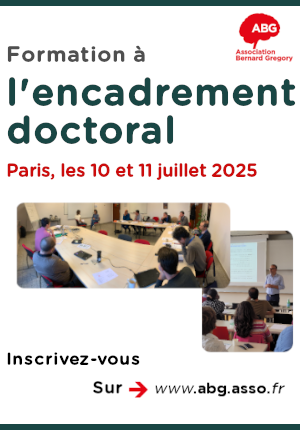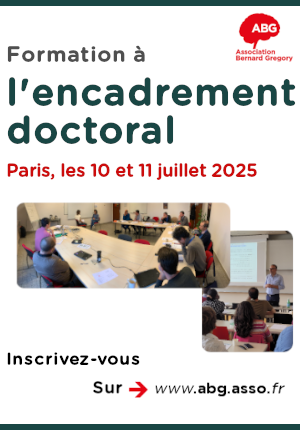Towards a Sustainable, Intelligent, and Energy-Autonomous Nanogrid Buildings: A Holistic Systemic Multi-Objective Optimization Approach
| ABG-131278 | Thesis topic | |
| 2025-04-18 | Public/private mixed funding |
- Engineering sciences
- Energy
- Computer science
Topic description
Thesis abstract
Buildings energy autonomy has become a major issue, motivating numerous research and development efforts, mainly in energy management, particularly through ICT in smart buildings. To achieve sustainable, intelligent, and energy-autonomous nanogrid buildings, it is essential to implement multi-objective controllers. These controllers must consider various factors, including renewable energy sources (i.e., PV, geothermal, fuel cell) and peak shaving (i.e., storage), to optimize energy consumption and comfort via a holistic and systematic approach.
Thesis scientific context
France’s carbon neutrality objective for 2050 aims to align the country with the 1.5°C target. This goal is defined as achieving a balance between the greenhouse gases (GHG) emitted each year and the quantity of GHGs absorbed by ”carbon sinks” within the national territory. Buildings are key components of society as they host human activity, but they are also a major contributor to its environmental footprint [1]. Brittany is a region that suffers from energy insecurity and is highly dependent on energy imports: it produces only about 12% of its consumption. Faced with this critical issue, the Region and other partners (State, ADEME, RTE, and ANAH) signed the Breton Electricity Pact 9 years ago, which aims to secure the electricity supply in Brittany. Moreover, Brittany has real opportunities [2]: significant potential in terms of energy savings and the development of renewable energies, particularly marine ones, which in short term could cover more than 20% of the region energy consumption and 34% of electricity consumption alone. Brittany wishes to position itself as one of the major French regions in the building and smart grid market (i.e. Smile project).
The current state of building management highlights the necessity for a transformation towards intelligent buildings. An optimal trade-off is necessary between comfort and energy savings by optimizing the multiobjectives of buildings [3]. Traditional Building Energy Management Systems (BEMS) are primarily used as automation and simulation platform tools for simple optimization operations. However, these conventional controllers do not consider all the dynamics of the buildings, particularly occupancy factors [4]. Their performance is also heavily dependent on the accuracy of building models. In literature, there are mainly three types of models that are used: 1) white-box (physics-based) models, 2) black-box (data-based), and 3) grey-box (hybrid) models [5]. Both the black-box and grey-box models have shown promising results with low computational costs and design simplicity [6].
The occupants of the building are active participants in the system, and their interaction with the building, like HVAC (heating, ventilation, air conditioning) control, plug-loads, lighting, etc., significantly influences the overall performance of the buildings [7]. Additionally, integrating renewable energy sources into buildings to reduce their grid dependency positively influences sustainable development. However, this integration complicates optimization challenges for BEMS, making their operation increasingly difficult. Traditional interaction between occupants and buildings tends to be unidirectional, with manual regulation by the occupants. In contrast, the concept of intelligent buildings has evolved. Unlike automated systems that merely regulate based on monitoring, an intelligent system is based on several agents that are able to communicate with each other, learn, and act adaptively [8].
The emergence of cost-effective IoT systems, coupled with the availability of data and advanced computational power, has created the way for the implementation of data-driven or hybrid approaches. Intelligent control systems can be categorized into several levels of intelligence based on their functionality and services: from basic monitoring, where users control the environment based on their needs, to advanced systems that monitor, propose solutions, and act autonomously, continuously learning from new patterns and interactions [9, 10].
The objective of this research work is therefore to:
- Address the challenges in developing thermal models for controllers by conducting a state-of-the-art comparison of data-driven and hybrid methods, highlighting their advantages and areas for improvement through the application of one of these approaches,
- Develop an occupancy-centric and hybrid energy systems multi-objective intelligent controller for the buildings,
- Integrate the dynamic information of the energy management system into the BIM.
This intelligent system should facilitate two-way communication between the occupants and buildings, for example, buildings indicating their present condition and future actions to the occupants and vice versa, making it an essential tool for the development of sustainable buildings and achieving the France’s carbon neutrality objective for 2050 aims. This intelligent controller system should be developed as an open-access tool, facilitating broader adoption and innovation in building management.
This thesis project builds on previously obtained research results, particularly the thesis work [11], where a thermal model was developed using a hybrid method for buildings. This model was validated by integrating it into an MPC controller, achieving significant energy savings of 31% compared to traditional controllers. Subsequent ongoing research funded by UBO and CESI Brest [12] further investigates the integration of occupancy prediction models, developed using a data-driven method to predict both short- and long-term occupancy. Additionally, other research works in progress aims at the dynamic control of HVAC systems [13] and the development of sensor fusion techniques for estimating occupancy and evaluating the influence of information systems (EIS) on energy in intelligent buildings.
The aim of this thesis project is to build on this work and integrate it into a holistic, multi-objective intelligent building controller. The aim is not only to improve optimization strategies for energy consumption and comfort, but also to integrate demand response and energy transactions for greater profitability. A key aspect of our approach is the development of an open-access system, evaluated by a demonstrator [14], taking advantage of the OPAL-RT loop hardware installation (at IRDL) to simulate real-world scenarios.
Supervision team:
- Dr. HdR. Karim Beddiar, Direction Régionale Ouest, UR 7527 LINEACT, CESI Ecole d’ingénieur La Rochelle
- Prof. Mohamed Benbouzid, UMR CNRS 6027 IRDL, Université de Bretagne Occidentale, Brest
- Dr. Abhinandana Boodi, Enseignant Chercheur, UR 7527 LINEACT, CESI Ecole d’ingénieur Brest
References
[1] A. Gaspard et al. “Introducing sufficiency in the building sector in net-zero scenarios for France”. In: Energy
and Buildings 278 (2023), p. 112590. doi: 10.1016/j.enbuild.2022.112590.
[2] ADEME. Feuille de Route pour le Développement des Smart Grids en Bretagne. 2013. url: https://www.bdi.
fr/wpcontent/uploads/2014/10/feuille_de_route_sg_vff.pdf.
[3] A. Boodi et al. “Intelligent systems for building energy and occupant comfort optimization: A state of the art
review and recommendations”. In: Energies 11.10 (2018), p. 2604.
[4] C. Kanthila et al. “Building Occupancy Behavior and Prediction Methods: A Critical Review and Challenging
Locks”. In: IEEE Access 9 (2021), pp. 79353–79372. doi: 10.1109/ACCESS.2021.3083534.
[5] X. Li and J.Wen. “Review of building energy modeling for control and operation”. In: Renewable and Sustainable
Energy Reviews 37 (2014), pp. 517–537. doi: 10.1016/j.rser.2014.05.056.
[6] A. Boodi et al. “Simplified Building Thermal Model Development and Parameters Evaluation Using a Stochastic
Approach”. In: Energies 13.11 (2020), p. 2899. doi: 10.3390/en13112899.
[7] K.-U. Ahn et al. “Predictability of occupant presence and performance gap in building energy simulation”. In:
Applied Energy 208 (2017), pp. 1639–1652. doi: 10.1016/j.apenergy.2017.04.083.
[8] A. Karami et al. “User in the Loop: Adaptive Smart Homes Exploiting User Feedback—State of the Art and
Future Directions”. In: Information 7.2 (2016), p. 35. doi: 10.3390/info7020035.
[9] J. K. W. Wong, H. Li, and S. W. Wang. “Intelligent building research: a review”. In: Automation in Construction
14.1 (2005), pp. 143–159. doi: 10.1016/j.autcon.2004.06.001.
[10] P. Pishdad-Bozorgi and Q. Zeng. “Conscious Intelligent Buildings: Envisioning the Next Generation of Smart
Buildings”. In: ASC2022. 58th Annual Associated Schools of Construction International Conference. 2022,
pp. 470–460. doi: 10.29007/q151.
[11] A. Boodi. “On energy-efficient buildings: Hybrid dynamic modeling for analysis and control”. PhD thesis. Université
de Bretagne Occidentale, Brest, 2021. url: http://www.theses.fr/s194972.
[12] C. Kanthila et al. “Enhanced multi-horizon occupancy prediction in smart buildings using cascaded Bi-LSTM
models with integrated features”. In: Energy and Buildings 318 (2024), p. 114442. issn: 0378-7788. doi: https:
//doi.org/10.1016/j.enbuild.2024.114442. url: https://www.sciencedirect.com/science/article/
pii/S0378778824005589.
[13] K. Al Sayed et al. “Reinforcement Learning for Optimal HVAC Control: From Theory to Real-World Applications”.
In: IECON 2023- 49th Annual Conference of the IEEE Industrial Electronics Society. Singapore,
Singapore: IEEE, 2023, pp. 1–6. doi: 10.1109/IECON51785.2023.10312131.
[14] CESI LINEACT. Ville du Futur, Bâtiment du Futur. url: https://recherche.cesi.fr/ville- futurbatiment-
futur/.
Funding category
Funding further details
Presentation of host institution and host laboratory
CESI LINEACT (https://lineact.cesi.fr/) et IRDL (https://www.irdl.fr/)
Website :
Candidate's profile
Scientific and technical skills:
- The applicant must be from a Electrical/Control engineering with computer engineering skills.
- Knowledge of building physics, building energy, or HVAC systems is preferred.
- Experience in data mining, analysis, and management is required.
- Experience in optimization techniques is preferred.
- Experience in programming environments (eg. Python).
- Good written and spoken English knowledge
Social skills:
- Be autonomous, have a spirit of initiative and curiosity,
- Know how to work in a team and in autonomy, and have good interpersonal skills,
- To be enthusiastic and self-motivated,
- To be rigourous.
Vous avez déjà un compte ?
Nouvel utilisateur ?
Get ABG’s monthly newsletters including news, job offers, grants & fellowships and a selection of relevant events…
Discover our members
 SUEZ
SUEZ  ONERA - The French Aerospace Lab
ONERA - The French Aerospace Lab  Institut Sup'biotech de Paris
Institut Sup'biotech de Paris  MabDesign
MabDesign  Laboratoire National de Métrologie et d'Essais - LNE
Laboratoire National de Métrologie et d'Essais - LNE  ADEME
ADEME  Généthon
Généthon  Nokia Bell Labs France
Nokia Bell Labs France  CASDEN
CASDEN  Groupe AFNOR - Association française de normalisation
Groupe AFNOR - Association française de normalisation  ASNR - Autorité de sûreté nucléaire et de radioprotection - Siège
ASNR - Autorité de sûreté nucléaire et de radioprotection - Siège  CESI
CESI  PhDOOC
PhDOOC  TotalEnergies
TotalEnergies  Ifremer
Ifremer  ANRT
ANRT  Tecknowmetrix
Tecknowmetrix  MabDesign
MabDesign  Aérocentre, Pôle d'excellence régional
Aérocentre, Pôle d'excellence régional





